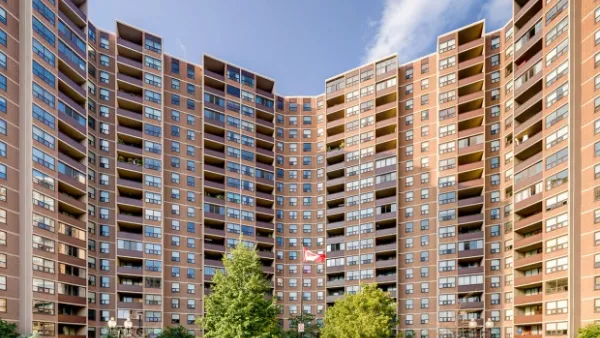A case study in community-led neighborhood revitalization.
Ajeev Bhatia writes about a community-led design initiative in Toronto that presents an innovative new model for grassroots neighborhood revitalization.
As cities around the world imagine new ways to “rebuild better” from the pandemic, it is crucial that these efforts bridge the divides that fuel place-based inequities both within and across communities. One way to do so is by strengthening and connecting the community-led structures that mobilize residents, organizations, and institutions into coordinated action for systemic change. A place-based effort from East Scarborough, Toronto illustrates the promise of this approach.
The example has grown from the strength of local communities in Scarborough, according to Bhatia, as well as a city's Neighbourhood Improvement Areas (NIAs) program. East Scarborough has five such NIAs, but also a strong foundation of community organizations, explains Bhatia. From this context, the East Scarborough Community Design Initiative (CDI) has launched its neighborhood revitalization process.
CDI began as a collaboration between the East Scarborough Storefront, architectural think tank archiTEXT, and architecture firm Sustainable that brought together local KGO youth and design professionals to revitalize a former police station into a much-needed community facility. But the goals of the project were broader than co-creating a community space—they sought to leverage design as a mechanism for inspiring participatory, cross-sectoral investment in social, economic, cultural, environmental, and civic neighborhood well-being for years to come.
Bhatia provides specifics on how the CDI has shifted the neighborhood revitalization paradigm, as well as some of the specific projects that the CDI enabled in the process. The model created by CDI is already spreading across the city of Toronto, according to Bhatia.

Analysis: Cybertruck Fatality Rate Far Exceeds That of Ford Pinto
The Tesla Cybertruck was recalled seven times last year.

National Parks Layoffs Will Cause Communities to Lose Billions
Thousands of essential park workers were laid off this week, just before the busy spring break season.

Retro-silient?: America’s First “Eco-burb,” The Woodlands Turns 50
A master-planned community north of Houston offers lessons on green infrastructure and resilient design, but falls short of its founder’s lofty affordability and walkability goals.

Test News Post 1
This is a summary

Analysis: Cybertruck Fatality Rate Far Exceeds That of Ford Pinto
The Tesla Cybertruck was recalled seven times last year.

Test News Headline 46
Test for the image on the front page.
Urban Design for Planners 1: Software Tools
This six-course series explores essential urban design concepts using open source software and equips planners with the tools they need to participate fully in the urban design process.
Planning for Universal Design
Learn the tools for implementing Universal Design in planning regulations.
EMC Planning Group, Inc.
Planetizen
Planetizen
Mpact (formerly Rail~Volution)
Great Falls Development Authority, Inc.
HUDs Office of Policy Development and Research
NYU Wagner Graduate School of Public Service




























